Let's be honest, it's customer testimonials that reassure and convince people...
You can have the best product.
If no one talks about it, it remains invisible or it's hard to convince those who see it.
Customer testimonials then become a strategic tool.
Not just social proof.
A real lever for activation.
Trust, commitment, reassurance : it's all there.
And that's what we're going to look at here, in concrete terms, how to activate testimonials as a retention lever.
Why do customer testimonials influence purchasing decisions?
A good testimonial isn't just a positive comment.
It's a story about an experience.
It's proof in action.
Because before buying, your customers want reassurance.
They want to project themselves. They want to understand if it worked for others.
They want to feel that yes, they can trust you.
This is where customer testimonials become decisive.
They create a bridge between desire and action. They put words and sometimes faces to a marketing promise.
And the impact is real.
54% of British people say that positive customer reviews influence their initial purchasing decision (Industry Report, 2025).
More than just a little nudge, it's a trigger.
Especially if the testimonial goes beyond a simple “very satisfied.”
What works are concrete stories, shared emotions, and measurable results.
In short, anything that rings true.
Testimonials then become a strategic tool in thecustomer journey.
They reassure before the purchase, engage during... and build loyalty after.
1. Thanks to social proof
Reviews, ratings, and customer testimonials are often confused.
However, they are not the same thing.
A review is often brief.
One star, two sentences, and you're done.
A rating? Even quicker.
Useful, but not engaging.
A testimonial, on the other hand, tells a story.
It provides context.
It shows how your product or service fits into real life.
And all showcase the power of social proof.
It's a psychological mechanism that drives people to follow what others have validated before them.
It's a powerful lever, especially in a world saturated with options and promises.
👉 If you want to dig deeper into the subject, we discuss it in detail here: Why does social proof boost sales?
2. Through content that builds trust and retention
A well-used customer testimonial doesn't stop at the sale.
It continues to have an effect afterwards.
Why? Because it strengthens the relationship.
It reminds the customer that they are part of a community of satisfied people.
And that builds loyalty.
In a commitment funnel, testimonials have several lives.
- Before the purchase, they reassure.
- After the purchase, they reinforce.
It's a virtuous circle.
The customer commits to the brand and becomes an ambassador.
They share their experience.
They engage in turn.
And it all starts with a well-captured... and well-distributed testimonial.
5 types of customer testimonials to collect (and where to use them)
Not all testimonials are the same.
And that's a good thing.
Each format has its moment, its channel, its impact.
A good customer testimonial must appear in the right place in the journey.
On a product page, in a post-purchase email, at the heart of a brand video...
In short, where it can really make a difference.
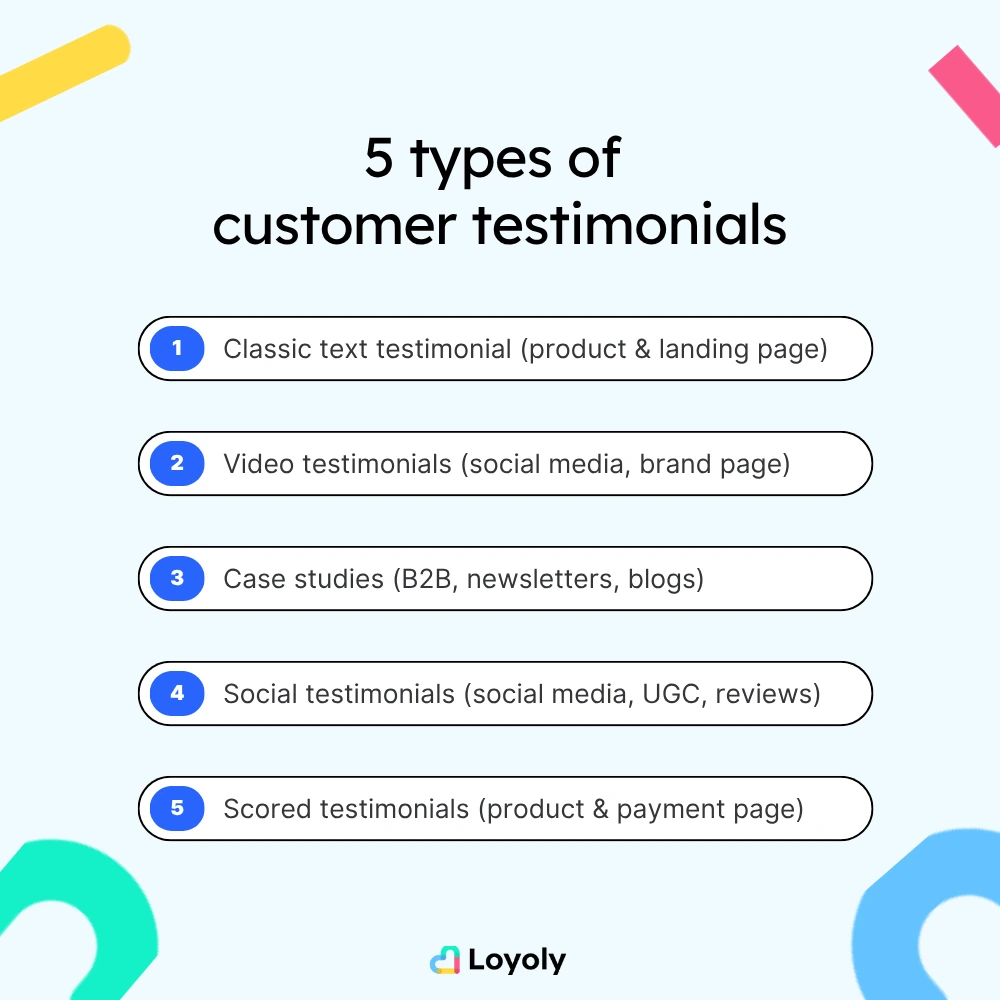
1. The classic text testimonial (product page, landing page)
This is the easiest to collect.
And yet, it remains incredibly effective.
A few well-chosen lines can reassure in a matter of seconds, especially if they are placed under a product page or on a registration page.
Add a satisfaction badge or UGC visual next to it, and you increase its persuasive power.
A small insert, a big impact.
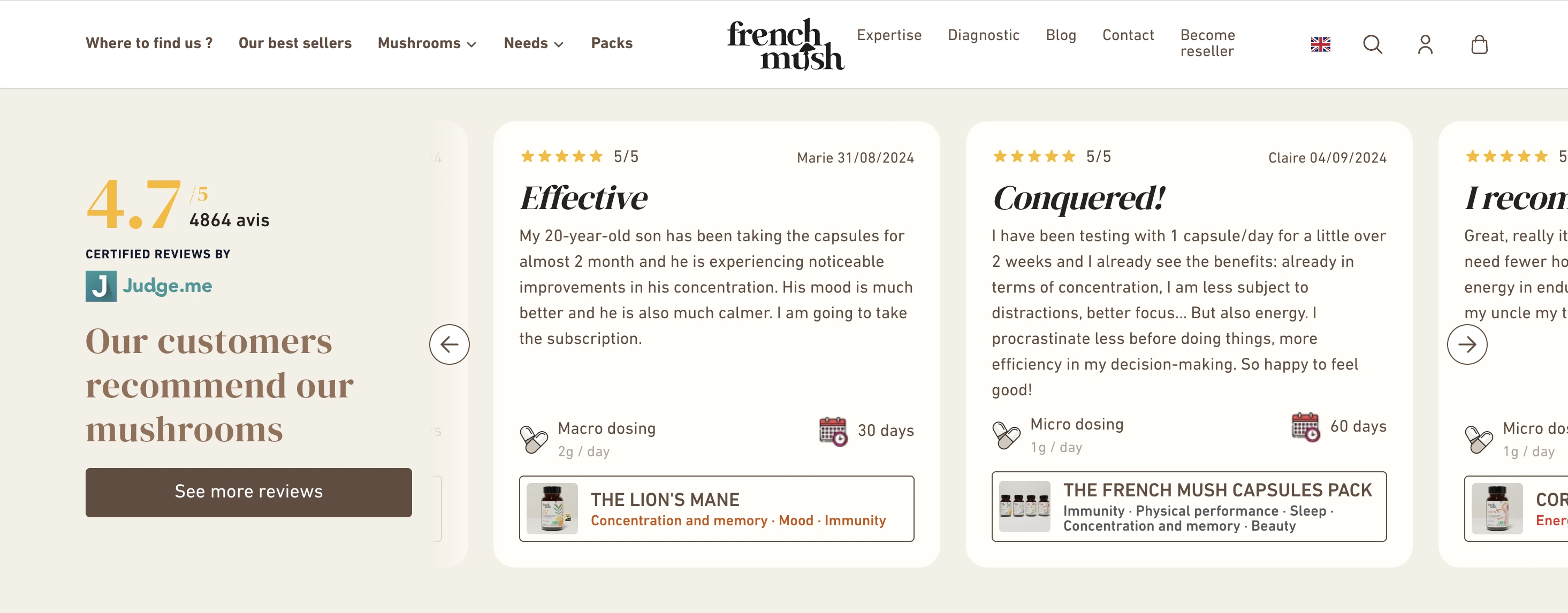
2. Video testimonials (social media, brand page)
Ah, the video format... There's nothing like it for conveying emotion.
A customer talking to the camera, showing the product, explaining their experience?
It's concrete.
And that's what captivates people on Instagram, TikTok, YouTube Shorts, or on your website.
It's a format with high viral potential if it's well constructed and integrated into a communication strategy.
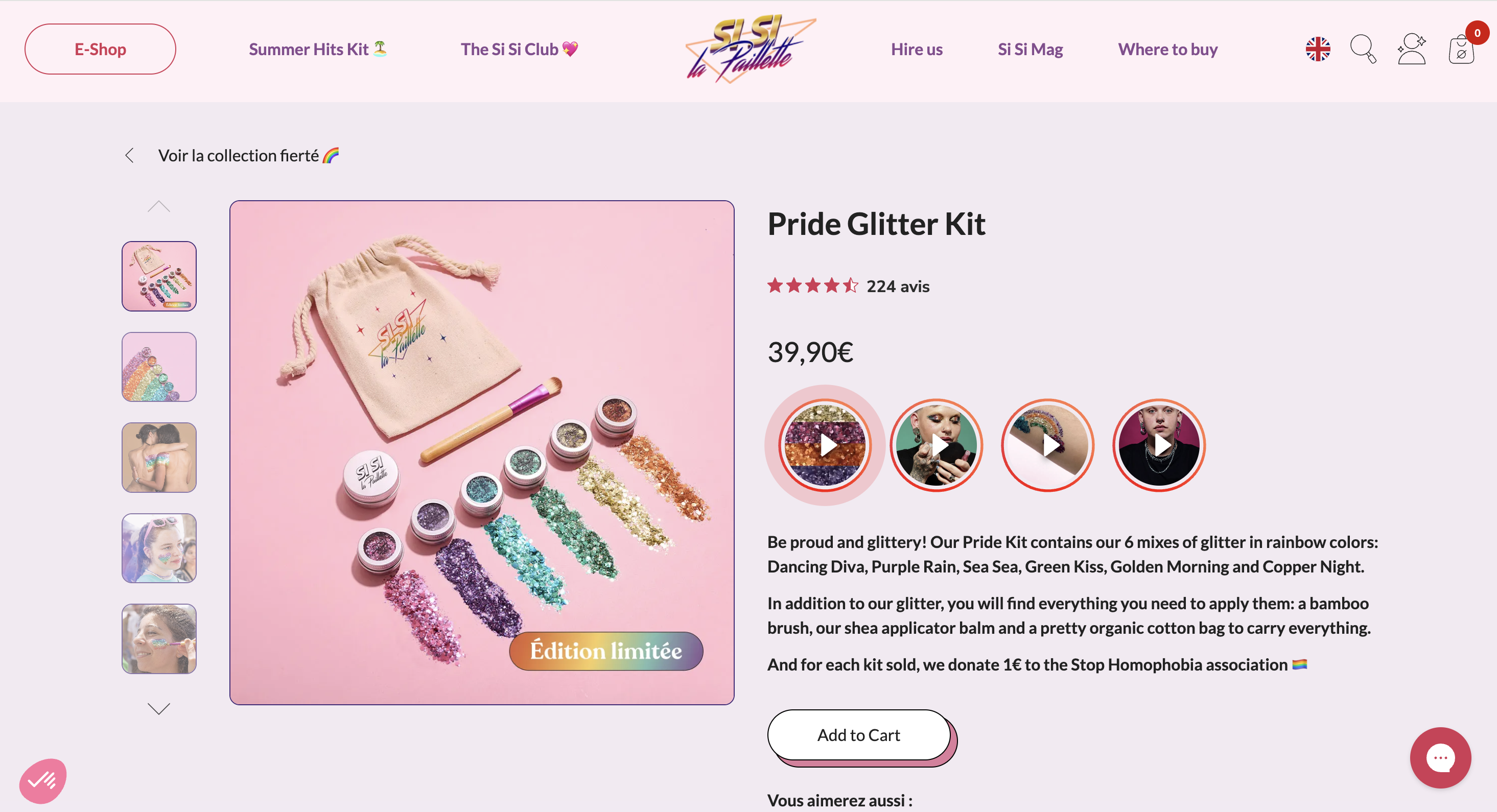
The advantage is that you can use it to its fullest potential across different channels and, thanks to this testimonial, prospects can identify with the person giving the testimonial.
3. Case studies (B2B, newsletters, blogs)
This is the long version of the customer testimonial.
But in B2B, it's a hit.
Why? Because it shows how a customer solved a real problem thanks to you.
With figures, steps, and concrete examples.
A well-written case study is a powerful tool for reassuring customers.
It's ideal for converting leads who are still hesitant.
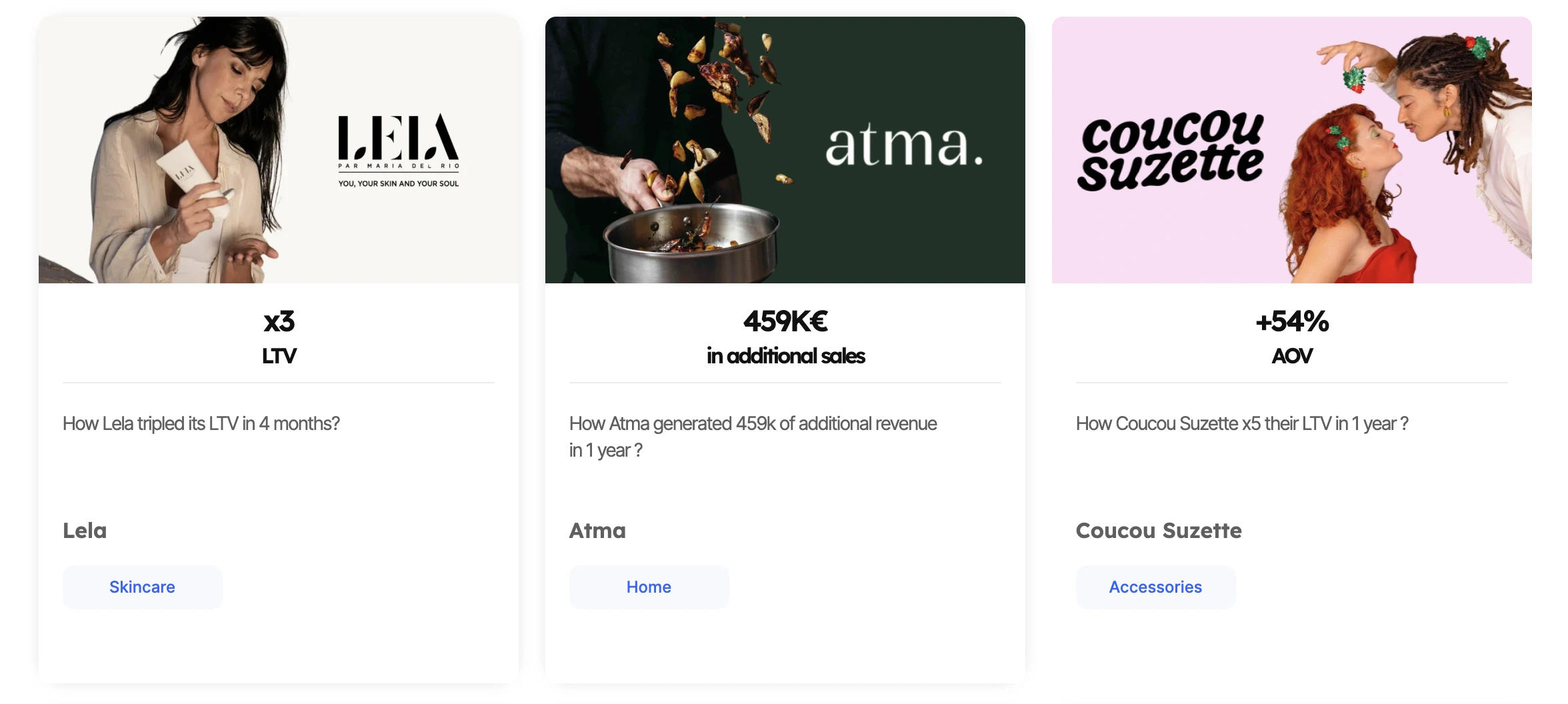
👉 All available case studies here: case studies on customer loyalty and referrals with Loyoly.
4. Social testimonials (social media, UGC showcase)
Customers spontaneously post their opinions.
So why not make the most of them?
A positive comment, an Instagram story, a LinkedIn post...
This is raw, authentic content.
With a tool like Loyoly, you can curate, sort, reformat, and integrate it into your key pages.
Your community then becomes your best showcase.

5. Scored testimonials (product page, payment page)
Here, we're talking about numerical ratings: an NPS, a satisfaction score, “98% of customers recommend this product.”
It's visual, immediate, and reassuring at the moment of truth.
Ideal on a landing page, product page or just before confirming a shopping cart.
This little boost can tip the scales.
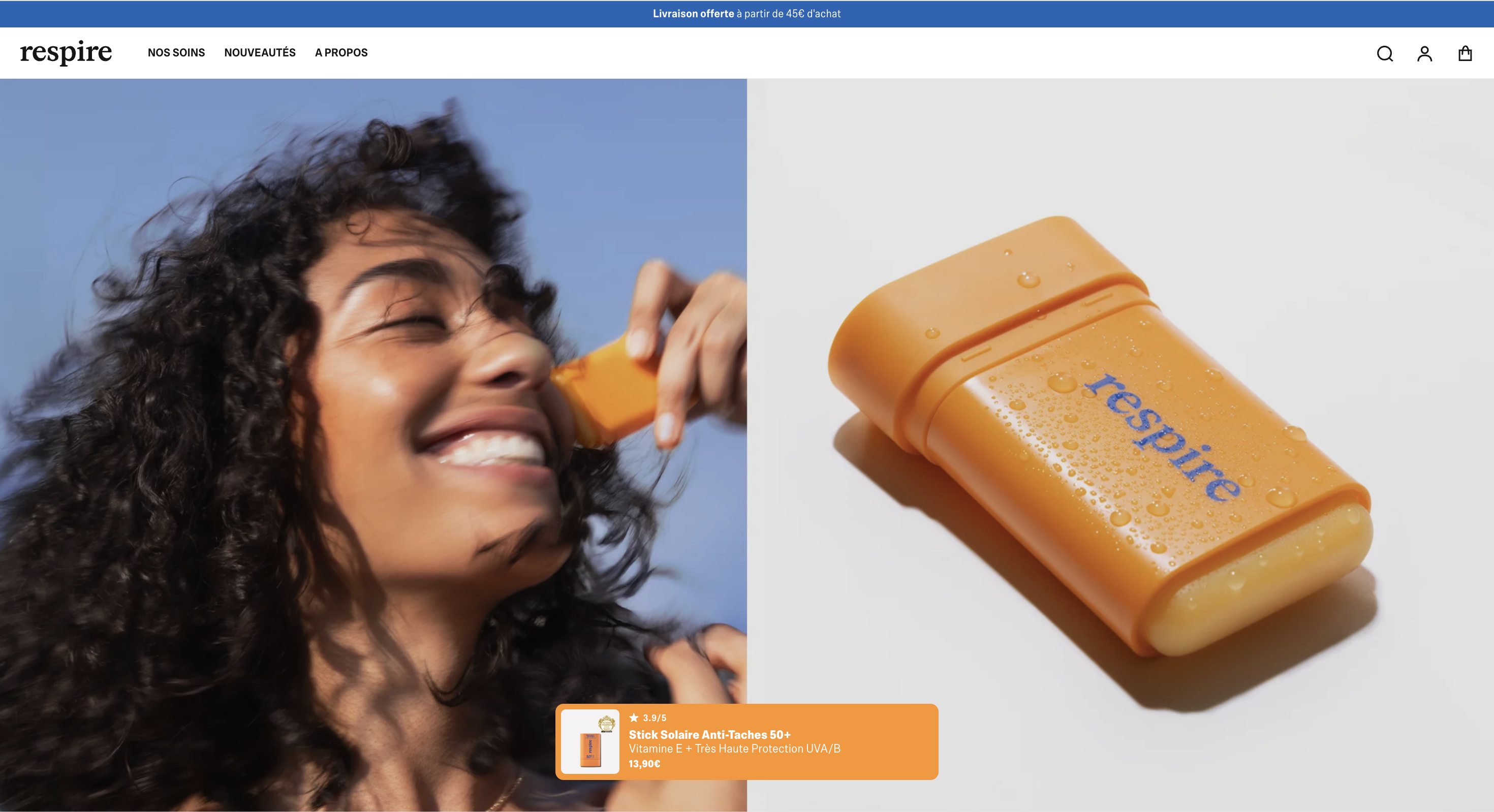
How to effectively collect customer testimonials?
We often forget, but a good testimonial doesn't just fall from the sky.
It has to be asked for.
And above all, it has to be asked for at the right time, in the right way.
Here's how to maximize your chances of getting authentic... and usable feedback.
Choose the right moments to ask for a testimonial
Timing is key.
If you send your request too early, the customer won't have formed an opinion yet.
If you wait too long, the emotion will have faded.
The best times are:
- Right after the purchase, when the excitement is still there.
- Or after a second order, proving that a relationship has been established.
- Following a peak in satisfaction. A smooth interaction, a product received faster than expected, a task completed...
In short, moments when the customer is inclined to express themselves positively.
But to do that, you need to know your customer lifecycle well.
And therefore, understand each stage of the purchasing journey.
This article, which details the customer purchasing journey, should help you understand the different phases of a customer's lifecycle before, during, and after the purchase.
Write a clear and engaging request
A good message is worth a thousand reminders.
Be direct, but human.
Clear, but personalized.
Here is an example of what you could write:
Congratulations, you've earned 50 points 🎉
One last step to validate your mission: leave us a short testimonial about your experience!
It only takes a minute, and it helps the whole community 🙌
→ Share my opinion
It's simple, clear, and engaging.
The customer is rewarded, motivated, and immediately understands why their feedback matters.
And you get a testimonial that you can use in a positive, gamified context.
That's exactly what Loyoly loyalty programs do.
Create simple and engaging missions to collect testimonials seamlessly.
Customers are invited to share their experience, they feel valued and rewarded, all in a simple, fun, and automated way.
4 steps to collect customer testimonials
Setting up a customer testimonial collection process doesn't have to be tedious.
With the right tools and a structured approach, you can collect authentic, engaging, and even automated feedback.
That's where mission-based programs come in.
They allow customers themselves to share their experiences in a seamless and gamified way.

1. Define a clear campaign objective
Before you launch anything, know what you're aiming for.
Do you want to increase social proof on your product pages?
Promote a new product?
Reassure new visitors?
By clarifying your intention, you'll know what type of testimonial to collect and in what format.
2. Segment customers and personalize the request
Not all customers have the same experience.
So you might as well talk to the right profiles.
Use loyalty, engagement, or purchase history data to identify your ambassador customers.
They are often the ones who take action spontaneously, especially if the timing is right.
3. Encourage feedback with gamified missions
This is where things really take off.
With Loyoly, you can create specific missions to invite your customers to share their experience: “Share your opinion,” “Tell your story,” “Leave a video testimonial,” etc.
These missions are simple, engaging, and above all, rewarded.
The customer therefore participates of their own accord, without feeling that they are being asked for a favor.
They express themselves because they want to and because the framework is well thought out.
And you? You collect authentic testimonials without weighing down your customer journey.
Pssst... You might find this interesting!
Loyalty programs are strategic for your brand, and we can probably help. Check out our platform!
4. Use and share the testimonials you receive
Once you have them, these testimonials need to be put to good use.
Don't let them sit in a spreadsheet.
Integrate them into your product pages, campaigns, and social media.
Whether they are text, video, or social media, work on their presentation: visual quotes, UGC visuals, native videos.
And above all, link them to your marketing promises.
A good testimonial, well placed, can convert on its own.
Turn satisfied customers into ambassadors with Loyoly
A testimonial is not an end in itself.
It is a trigger.
Because a customer who takes the time to share their experience is already engaged.
And an engaged customer is much more likely to refer, recommend, and remain loyal.
You collect a testimonial → the customer feels valued → they share it with others → they become an ambassador.
And this cycle can go on and on.
With Loyoly, this loop becomes a system in its own right.
You can create community missions, collect feedback, turn it into marketing content, and then activate referrals right away.
Everything is gamified, fluid, and automated.
It's everything you need to turn your best customers into real growth drivers.
👉 Discover how to activate the referral lever with Loyoly: our referral solutions

.png)




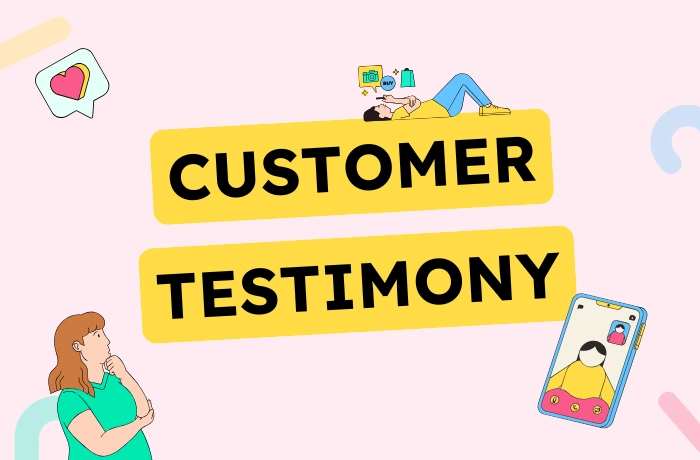




.png)
.png)
.png)
.png)
.png)